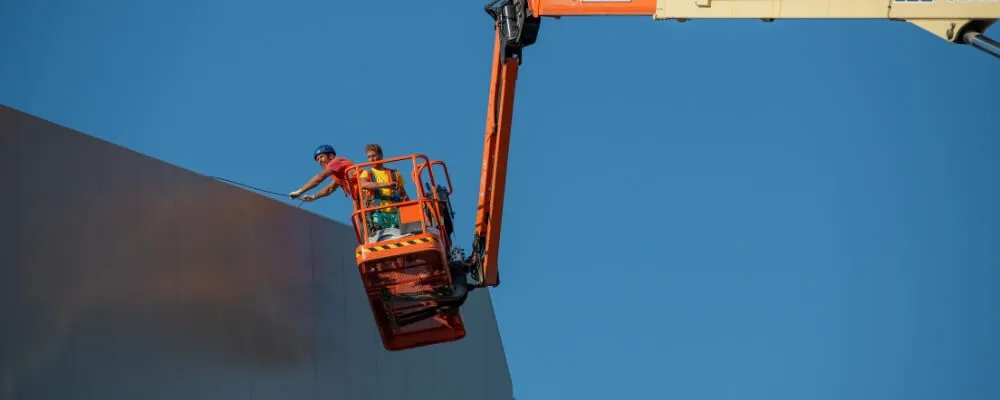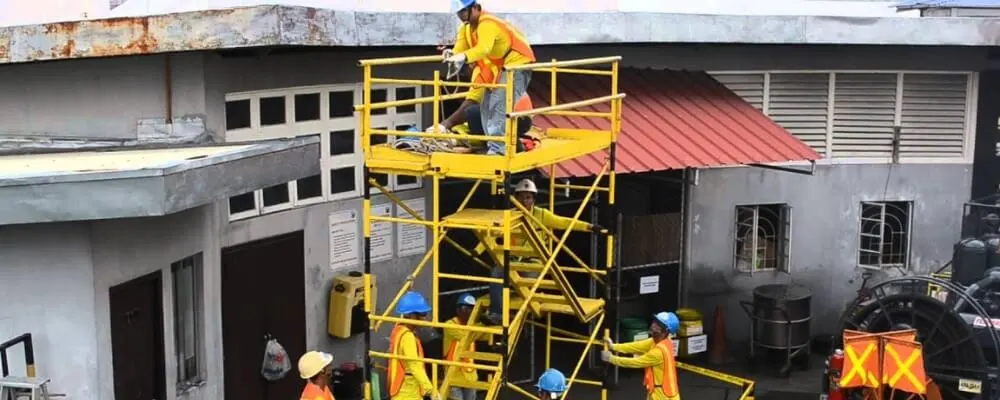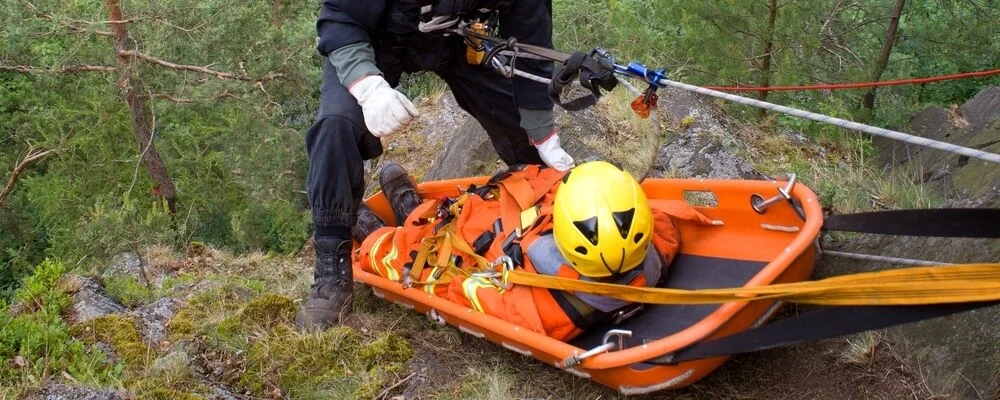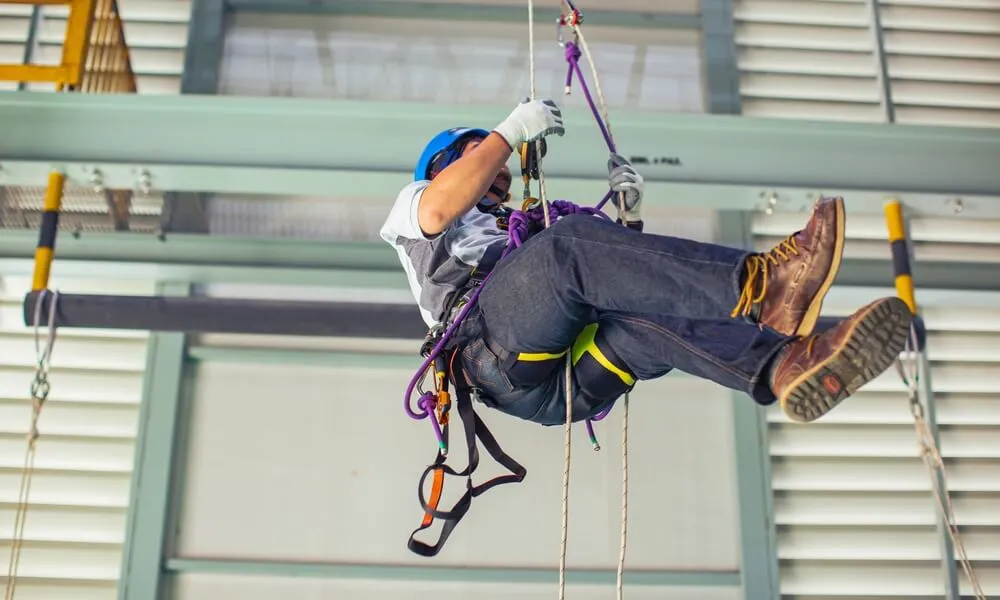Working at height brings a unique set of challenges and potential hazards, with one of the most critical being the need for immediate response in the case of a fall. Despite stringent safety measures, the risk of accidents cannot be entirely eliminated. Therefore, it becomes imperative to have a well-planned and effective emergency rescue plan in place. A prompt and efficient rescue operation can mitigate the risk of severe injuries and often mean the difference between life and death.
In this blog post, we aim to highlight the various types of emergency rescue plans when working at height. From self-rescue to fully assisted rescue, each procedure is designed to handle different scenarios that may arise during high-elevation work situations. We hope this information will help employers, supervisors, and workers understand, plan for, and execute rescue procedures effectively and safely, reducing potential risks and enhancing overall job site safety. Let’s delve deeper into these rescue operations’ complexities and their vital role in ensuring worker safety.

Rescue Plan For Working At Height
A rescue plan for working at height is a predefined and well-thought-out strategy or procedure designed to safely retrieve a person who has fallen from a height and is suspended in their fall protection gear or can no longer safely descend without assistance.
Rescue plans are a critical part of safety protocols for work at height. They are designed to be initiated immediately after a fall incident or other emergency to minimize injury and save lives.
Key components of a rescue plan for working at height include:
- Preparation: This includes selecting and maintaining the proper fall protection and rescue equipment and employee training on how to use it. The plan should be site-specific, considering all the possible risks and conditions of the location where work at height will be performed.
- Immediate Response: The plan should outline the steps to take immediately after a fall occurs. This might include alerting a site supervisor or safety officer, making an emergency call if necessary, or beginning self-rescue or assisted rescue procedures.
- Rescue Procedures: These are detailed, step-by-step procedures that rescuers should follow to safely retrieve the fallen worker. This can include different types of rescue scenarios like self-rescue, assisted self-rescue, fully assisted rescue, ladder rescue, or aerial lift rescue. The plan should be tailored to the specific job site and working conditions.
- Post-Rescue Actions: After a worker has been rescued, the plan should specify what medical care should be given, who should be notified, and how to record and report the incident. It should also guide the review and assessment of the incident to update procedures and prevent future occurrences.
- Training and Drills: Regular training and practice drills should be part of the rescue plan to ensure that workers and rescuers are familiar with the procedures and can execute them quickly and effectively under stress.
- Equipment Inspection and Maintenance: The rescue plan should include regular inspection and maintenance of all fall protection and rescue equipment to ensure it is in good working condition.
A rescue plan for working at height is not just a document. It is a living system that requires regular review and updates based on changes in working conditions, new equipment, or lessons learned from incidents or near misses.

Types Of Emergency Rescue Plans When Working At Height
As with any industry, the types of emergency rescue work at height will depend on the specific job or project. Employers must be aware of the different rescue operations required in any situation.
1. Self Rescue
If the employee has selected the proper fall arrest equipment, installed it correctly, is using it properly, and has not been injured, they should, in most cases, be able to self-rescue as follows:
- Make verbal contact with the fallen employee to help them stay calm, establish whether they are injured, and guide them during self-rescue.
- Employee climbs back up to the work platform from which they fell. (This would typically involve a fall of 0.60 m. to 0.9 m. or 2 to 3 feet).
- The rescue team assists the employee back onto the work platform.
- Employee returns to ground or floor level. The rescue team stays with the employee in case they are unstable.
- Have the employee checked by a qualified first aider and provide first aid if required.
- Collect all of the fall arrest equipment used by the employee and tag the equipment as DO NOT USE. Document all of the items used, the employee’s name, the date and time of the fall, and the job performed when the fall occurred.
- Give the fall arrest equipment and documentation to the employee’s supervisor or manager to have inspected for defects and damage.
2. Assisted Self Rescue
If self-rescue is impossible, an assisted self-rescue will be performed using a mechanical assist winching system. The following procedures are to be used during this type of rescue:
- Make verbal contact with the employee to help them stay calm and determine whether they are injured.
- Maintain verbal contact during the rescue.
- While rescue preparations are being made, do the following:
a) If the employee’s harness has suspension relief straps and is okay, tell the employee to insert their feet in the straps to relieve the pressure exerted by the harness straps on their legs.
b) If the employee’s harness is not equipped with suspension relief straps, lower a rope with a loop at the end for the employee to use as a relief strap.
c) Encourage employees to keep moving their legs while their feet are in the suspension strap or rope loop.
- Attach the winching equipment to a securely installed, properly rated anchoring point.
- Lower the winch line to the employee.
- Have the employee grab the hook on the end of the line and securely attach it to the proper D-ring on their harness. (If necessary, provide verbal directions to assist the employee.)
- A member of the rescue team must verify that there is a positive/secure connection between the hook and the D-ring.
- The rescue team must raise or lower the fallen employee to the nearest safe work platform, floor, or ground level.
- Have the employee checked by a qualified first aider and provide first aid if required.
- Collect the employee’s fall arrest equipment and tag it as DO NOT USE. Document the items used, the employee’s name, the date and time of the fall, and the job performed when the fall occurred.
- Give the fall arrest equipment and documentation to the employee’s supervisor or manager to have inspected for defects or damage.

3. Fully Assisted Rescue
These procedures must be followed if the employee is injured and cannot attach themselves to the rescue system.
- Make verbal contact with the employee to help them stay calm and determine whether they are injured.
- Maintain verbal contact during the rescue.
- Attach the winching equipment to a securely installed and adequately rated anchoring point.
- Rig separate lines for rescuers to use while carrying out the rescue.
- Use a rescue remote connection pole to attach the winching cable or rope to the employee’s harness D ring if possible.
- If the remote connection pole cannot be used, lower a rescue team member to the suspended employee to attach the winch line to the D ring in the employee’s harness.
- Raise or lower the employee to the nearest safe work platform or lower the employee to the ground or floor. (NOTE: Unless there is a hazard that prevents the rescue team from doing so, any employee that is injured or has been suspended in their harness for an unsafe period should be lowered to the floor or ground so that first aid and medical attention can be accessed as quickly as possible.)
- Provide first aid and required medical attention. (Ensure that the possibility of suspension trauma is addressed.)
- Collect the employee’s fall arrest equipment and tag it as DO NOT USE. Document the items used, the employee’s name, the date and time of the fall, and the job performed when the fall occurred.
- Give the fall arrest equipment and documentation to the employee’s supervisor or manager to have inspected for defects or damage.
4. Ladder Rescue
If a ladder can be safely set up and the suspended person can be safely reached by a rescuer on the ladder, follow the procedures listed below:
- Set up the ladder so that a rescuer can reach the suspended employee on the ladder.
- Rig separate lifelines for the rescuer on the ladder.
- If the employee that has fallen is unconscious or, due to injuries, cannot help during the rescue and a second rescuer is required, consideration should be given to using an alternative rescue procedure.
- Securely attach a separate lowering/winch line to the employee.
- Rescuers on the ground, or the closest safe surface, should raise the employee just enough to allow their lanyard to be disconnected and lower the employee to the ground or floor using the lowering line.
- Once the fallen employee has been lowered to a safe surface, provide first aid and determine if medical attention is required to deal with possible suspension trauma.
5. Aerial Lift Rescue
If an aerial lift is readily available and can safely reach the suspended employee, the following procedures must be followed. This rescue procedure can only be used if one of the rescuers is qualified to operate the aerial lift or a skilled operator can work with the rescuer.
- The aerial lift operator / qualified rescuer will ensure they wear proper fall protection equipment and that either an appropriate or self-retracting lanyard is available for the rescued employee.
- Maneuver the aerial lift into position under, and within safe reach of the employee to be rescued.
- Once the employee being rescued is safely on the platform of the aerial lift, attach the available lanyard or self-retracting lanyard to the harness of the rescued employee.
- Disconnect the lanyard or self-retracting lifeline the employee used when they fell.
- Lower the lift to the ground, remove the rescued employee from the lift, and immediately provide the required medical attention.
- When it is safe to do so, remove the fall protection equipment involved in the accident from service, bag it and attach a tag with the employee’s name, the date and time of the fall and what activities were at the time of the fall.
- Turn the bagged equipment over to the employee’s supervisor.

Procedures to Follow When an Employee Falls and is Suspended
When an employee falls and is suspended by a fall arrest harness, an emergency rescue plan must be activated immediately. This plan involves the following steps:
- Command Center Establishment: The site supervisor or the person in charge of the rescue team should take control of the situation immediately. Their job is to assess the conditions and determine the safest and quickest way to execute the rescue.
- Alerting and Securing the Area: The leader of the rescue effort should notify all other workers in the vicinity of the emergency. All work in the immediate area should be halted. Non-essential staff should be asked to leave the area to ensure only relevant personnel are present during the rescue.
- Communication and Emergency Services: Security should be contacted at the designated number, in this case, 9149. If necessary, additional help from those trained in rescue procedures should also be requested. A critical part of this phase is to attempt communication with the fallen employee to understand their condition and evaluate whether they can participate in a self-rescue or require assisted rescue.
- Record Keeping: It is crucial to note when the employee fell and when they were rescued. The time difference between these events signifies the time the employee was suspended, which can help determine potential health risks.
- Monitor the Fallen Employee: The employee’s condition should be continuously monitored for signs of orthostatic intolerance, which can begin to manifest within 2-3 minutes. Symptoms include faintness, nausea, breathlessness, dizziness, sweating, paleness, hot flashes, grey skin tone, and potential vision loss.
- Assessment and Planning: The person in charge of the rescue must rapidly assess the situation to identify any new hazards that might have arisen due to the accident. A safe landing area should be identified at ground or floor level or on a work platform.
- Mitigating New Hazards: Any hazards identified in or near the landing area must be addressed promptly. If this necessitates new safety procedures, they should be documented and communicated clearly to all involved in the rescue.
- Coordinate with Emergency Response Personnel: If needed, a designated security employee should meet and guide the emergency response team (police, EHS, fire, etc.) to the accident site swiftly and safely.
- Implementation of Rescue Plan: The necessary rescue type should be determined based on the circumstances. Then, follow the specified procedures for the applicable type of rescue.
Conclusion
In conclusion, understanding the various types of emergency rescue plans when working at height is vital for ensuring the safety of employees involved in elevated work activities. From self-rescue to fully assisted rescue and the use of ladders or aerial lifts for rescue, each approach offers a different strategy based on the unique circumstances of the emergency. The key is to select the right method to provide the quickest and safest rescue, thus mitigating the risks of serious injury or even death.
But planning is only part of the equation. Regular training, drills, and equipment checks are critical to ensuring that everyone knows their role and can perform it efficiently and effectively when the time comes. A well-executed rescue plan not only saves lives but also fosters a safer work environment by emphasizing safety and preparedness.
Finally, it’s important to remember that a rescue plan should not be static but must evolve based on new equipment, updated safety regulations, and lessons learned from past incidents. By continually reviewing and updating your rescue procedures, you can ensure they remain current and effective, contributing to a safer workplace for all employees working at height.

